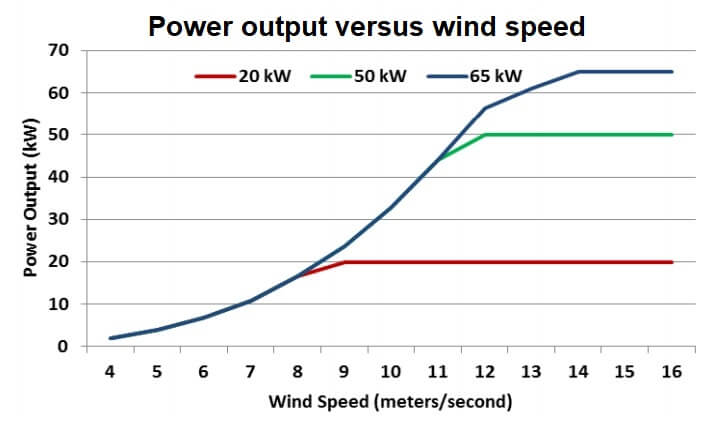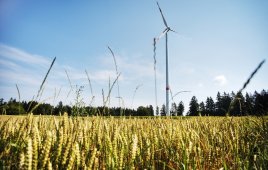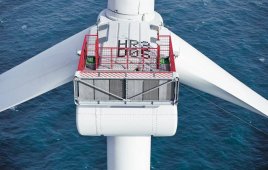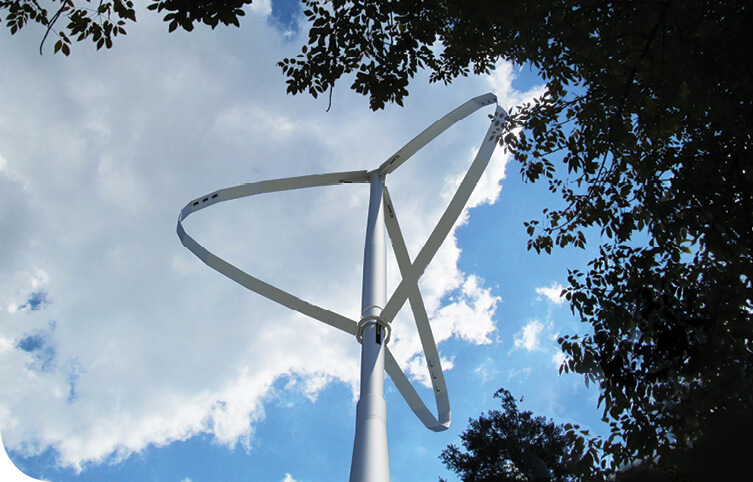
The WIND•e20 uses three segmented blades to produce power from 20 to 100 kW, depending on generator size. The spinning blades appear solid to birds so they fly around the working turbine.
This turbine design and its developer break all the rules − in a good way − around the design and marketing of industrial equipment. For instance, you cannot buy the WIND•e20 onsite wind turbine, but developer CGE Energy will install it on qualified property and sell you its power for an agreed upon period. This method cleverly makes renewable energy available even to non-profit organizations. And if the contract is not renewed at its end date, the company will haul the 105-ft turbine away, foundation and all.
There’s more. Let’s start with the foundation. It’s a prefabricated in four sections. The company president and CEO Bryan Zaplitny says prep requires no more than a common backhoe on a 20 by 20-ft square piece of land. “Factory preparation of the foundation allows more control of the concrete than would an outdoor pour. This is just one of the ways we streamline the adoption of sustainable energy. Most importantly, we can be good stewards of the planet and reuse the foundation elsewhere.”

Below: The foundation requires only excavation by a common backhoe. The pads are precast concrete that can be removed when the contract completes.
Just about everything about this turbine is unusual. For instance, its installation is considerably simplified versus other methods. It does not need a crane, for example. Zaplitny says that after his company and a client agree on a power requirement and duration, a single flatbed trailer will arrive with the turbine. Several legs will raise the turbine off the trailer and the truck will depart. An installation rig then unfolds the turbine (it’s in two hinged pieces), and the tower and turbine tilts up onto the foundation. Recall that a utility-scale turbine requires a crane that ships on about 21 semi-trailers.
The three blades sit flush with the tower during shipping. For the blades to open, a hydraulic device at their base rises to let the rotor take its 44-ft diameter “egg beater” or troposkein shape. After making proper electrical connections, the turbine gets to work, the vertical-axis design allowing the turbine to capture wind from any direction. Batteries and other electrical equipment, such as the inverter, will be housed in the base. An array of solar panels can also be part of the arrangement. A video of an installation is here: http://cgeenergy.com/technologies/wind.

The transport carriage also doubles as an erection mechanism that tilts the turbine onto its prepared foundation.
Zaplitny is planning on four outputs, 20, 50, 65, and 100 kW (depending on available wind and local size regulations), all based on the same foundation, tower, and blades. Power is transmitted down-tower by a shaft to the generator at the base for easy maintenance and access. “If a client decides it wants more power and the site wind can provide it, the original generator can be swapped out for a larger unit,” he adds.
Even though the blades appear curved, each is made of 11 sections with hinged connections. The rotor will be limited to about 80 rpm by using several aviation-style airbrakes in the center sections of each blade, and by two brakes in the tower. The design has been granted several patents in the U.S., with several more still pending in the U.S. and Europe,” he says.
Zaplitny says that WIND•e20 has received support from the Audubon Society because it minimizes bird strikes. “The theory is that the spinning blades appear as a solid object to birds, so they fly around the blades instead of into them. We have seen this first hand during our prototype testing. Vertical-axis wind turbines have an excellent track record with regard to birds, bats, and other wildlife,” he says.
Regarding maintenance, orienting the main shaft vertically rather than horizontally allows a significant reduction in parts. With fewer parts, reliability improves over more complex designs. Zaplitny says WIND•e20 is built of about 2,500 components, give or take a few nuts and bolts. Conventional horizontal-axis wind turbines (HAWT) contain approximately 8,000 components.
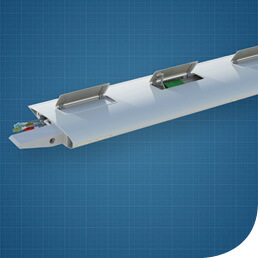
The airbrakes or trim tabs, only on center sections of each blade, provide air braking in high winds. Rotational speed is limited to 80 rpm. Other conventional brakes are in the lower tower base of the turbine, along with the generator and electrical equipment for easy access.
Lastly, while noise issues continue to dog HAWTs, and unfortunately wind turbines in general, the design here is considerably quieter and poses no problem.
The company recently commissioned the construction of a one-tenth scale model to demonstrate its method of installation. Roush Industries has used advanced rapid prototyping methods to fabricate the demonstration unit. That company will also provide components for full-sized units. The CGE and Roush teams currently work on building other demonstrations units to facilitate pre-sales of the production WIND-e20 turbines.
Filed Under: Financing

